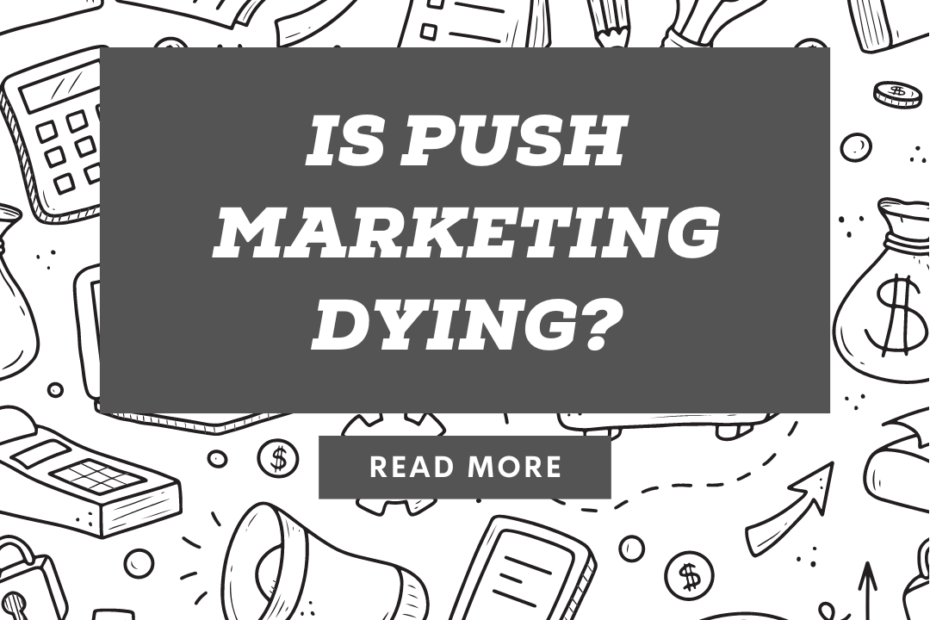Push marketing refers to the strategy of actively promoting a product or service to consumers through various channels, such as advertising, sales promotions, and personal selling. This type of marketing “pushes” the product or service to the customer.
Pull marketing, on the other hand, focuses on creating demand for a product or service through tactics such as building a strong brand image and reputation, and making the product or service easily accessible to consumers. This type of marketing “pulls” the customer towards the product or service.
Both push and pull marketing strategies have their own advantages and can be used in different situations. While push marketing is best for creating short-term sales, pull marketing is more effective in the long run for building brand loyalty and maintaining a steady flow of customers.
There are several ways to benefit from a pull marketing strategy:
1.Building a strong brand image: By consistently delivering high-quality products or services and providing excellent customer service, you can build a strong brand image that will attract customers and keep them coming back for more.
2.Creating content: Creating valuable, informative and educational content can help to attract and engage your target audience and drive traffic to your website.
3.Leveraging social media: Utilizing social media platforms like Facebook, Instagram, Twitter, and LinkedIn can help to increase brand awareness and attract customers.
4.Optimizing your website: Ensuring that your website is easy to navigate, visually appealing, and mobile-friendly will make it more likely that customers will stay on your site and explore what you have to offer.
5. Investing in SEO: By optimizing your website for search engines, you can improve your search engine rankings and increase visibility for your brand and products.
6. Building customer relationships: Building relationships with customers is important for creating brand loyalty and encouraging repeat business.
7. Leveraging Referral Marketing: Encourage customers to refer friends and family to your business. Happy customers are more likely to recommend your business to others.
Overall, a pull marketing strategy focuses on creating demand for your product or service by building a strong brand image and reputation, providing valuable content and making it easily accessible to customers. It helps to create long-term customer loyalty and sustainable growth.
Both push and pull marketing strategies have their own advantages and can be used in different situations. The choice of which strategy to use depends on the specific goals of the campaign and the target audience.
In general, pull marketing takes more time to build up, but when it’s successful it can create a more loyal customer base that will continue to buy from you in the future. While push marketing is more immediate and can be a great way to clear out inventory or meet short-term sales goals. A combination of both strategies can be the most effective way to achieve both short-term and long-term goals.
Push marketing is not necessarily dying, but it has become less effective in recent years due to changes in consumer behavior and technology.
1. Ad blockers: With the rise of ad blockers, it has become more difficult for businesses to reach consumers through traditional push marketing channels such as television, radio and print advertisements.
2. Over saturation of ads: Consumers are bombarded with advertisements everywhere they look, making it difficult for businesses to stand out and capture their attention.
3. Change in consumer behavior: Consumers are becoming more skeptical of traditional advertising and are more likely to trust recommendations from friends, family and online reviews rather than ads.
4. Increase in digital channels: The rise of digital channels such as social media, search engines, and mobile devices has made it easier for consumers to find and research products and services on their own.
5. Privacy concerns: Consumers are becoming more concerned about their online privacy, and are less willing to give away personal information in exchange for ads.
All these factors have led to a decline in the effectiveness of push marketing, as consumers are becoming increasingly resistant to traditional forms of advertising. Businesses must adapt to this change by focusing on pull marketing strategies that create a strong brand image, provide valuable content and make it easy for customers to find and research products and services on their own.
Keywords- Push marketing , Pull marketing , SEO , Content creation , Privacy concerns, sales , marketing

